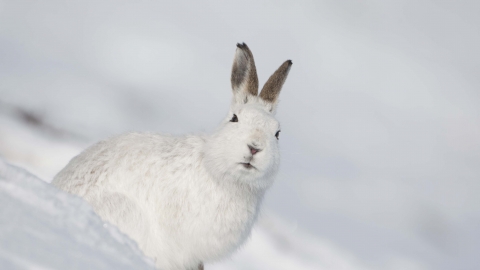 BASC is highlighting recent research which shows that the population of mountain hares can be up to 35 times higher on land managed for grouse shooting relative to unmanaged moorland.
BASC is highlighting recent research which shows that the population of mountain hares can be up to 35 times higher on land managed for grouse shooting relative to unmanaged moorland.
Reports today have suggested that hunting and game management are contributing to adverse survival prospects for the species.
The mountain hare is predominantly found in the highlands of Scotland, areas of the Scottish lowlands and in parts of England. It is the UK’s only indigenous hare species.
A report to the European Commission, due to be published in September 2019, will change the conservation status of the mountain hare to ‘unfavourable’.
But BASC has highlighted how media reports today have ignored recently-published and vital research from the Game and Wildlife Conservation Trust (GWCT). The research shows that mountain hares are present on sites contiguous with those which a previous study suggested have zero hare abundance.
The Werritty Review into Scottish grouse moor management, due to publish in a matter of weeks, will cover mountain hares.
Dr Colin Shedden, BASC Scotland director, said: “BASC refute the call for the culling of mountain hares to cease in Scotland.
“Mountain hares are culled to protect vegetation, including regenerating woodland, and to control the spread of disease when their population density grows too high. Recent research has shown the highest densities of mountain hares are significantly linked to managed grouse moors.
“Any decision made within the Werritty Review needs to be based on the evidence and acceptance that management plays a part in the mountain hare’s survival and success.
“Efforts to improve the mountain hare’s conservation status in Scotland should focus on enhancing understanding of their ecology and natural variability, not attacking the habitat that suits them best.”